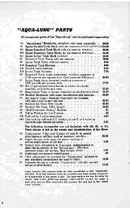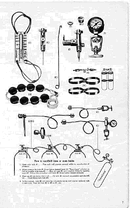You are using an out of date browser. It may not display this or other websites correctly.
You should upgrade or use an alternative browser.
You should upgrade or use an alternative browser.
Training then. This is what was state of the art advice in 1968
- Thread starter Jim Lapenta
- Start date
Please register or login
Welcome to ScubaBoard, the world's largest scuba diving community. Registration is not required to read the forums, but we encourage you to join. Joining has its benefits and enables you to participate in the discussions.
Benefits of registering include
- Ability to post and comment on topics and discussions.
- A Free photo gallery to share your dive photos with the world.
- You can make this box go away
I dove exclusively with J-valve tanks in the 60s and 70s as I don't think I got my first SPG until the early 80s. Of course since I dive in kelp forests much of the time, the J-valve rod was often pulled before I needed to use it. Fortunately my dives back then were generally shallower than today's dives.
The only "training" I got before my first time down on SCUBA was "don't hold your breath." Didn't get certified until 7 years later when I moved to California and started diving salt water. The agency I certified under (Los Angeles County) in 1969 offered a course that was far in advance of today's OW classes.
The only "training" I got before my first time down on SCUBA was "don't hold your breath." Didn't get certified until 7 years later when I moved to California and started diving salt water. The agency I certified under (Los Angeles County) in 1969 offered a course that was far in advance of today's OW classes.
Bob DBF
Contributor
If you want a more scientific approach to SCUBA diving at that time try The New Science of Skin and SCUBA Diving and the US Navy Dive Manual. Then as now, you can find a lot of self help books that only self help the author make a living. The good news is that then the people who took up diving were already good in the water, knew SCUBA was dangerous, and had 72's or smaller so were less likely to go as deep as fast as new divers do now. At least it was in my case and the other divers I met in the '60's.
Although scientifically the theory involved is wrong, the effect is correct. Also factor in that most, if not all, regs were unbalanced this effect was quite pronounced and gave a leisurely 60 fpm, or less, to the surface, don't expect that now with balanced regs.
It was a different time with different gear, read in context.
Bob
-----------------------------
I may be old, but I'm not dead yet.
When at last the air pressure in the cylinder becomes almost equal with the water pressure surrounding it, it becomes impossible to breathe. But the moment the diver begins his ascent towards the surface, the air in the tank expands and provides him with a few more breaths, which are adequate to get him safely to the surface.
Although scientifically the theory involved is wrong, the effect is correct. Also factor in that most, if not all, regs were unbalanced this effect was quite pronounced and gave a leisurely 60 fpm, or less, to the surface, don't expect that now with balanced regs.
It was a different time with different gear, read in context.
Bob
-----------------------------
I may be old, but I'm not dead yet.
And, in that context I looked at my copy of 'The New Science . . . ' and here is what it says about valves:If you want a more scientific approach to SCUBA diving at that time try The New Science of Skin and SCUBA Diving and the US Navy Dive Manual.
'TANK VALVES . . . Two types may be had. One automatically signals the diver when the air reserve is down to a certain pressure. The other only opens or closes to release or stop air flow.
"K" valve. This is a simple on-off valve that operates like a kitchen faucet. When it is turned to the on, or open, position, air will flow to the demand regulator until internal tank pressure equals water pressure or the air supply is exhausted. Because the "K" valve lacks a signal for warning the diver that his air supply is about to run out, it is recommended that this type of valve be used only with an underwater pressure gauge.
"J" valve. A more sophisticated air-pressure control, the "J" valve contains a spring-operated reserve mechanism that automatically shuts off the flow of air when internal tank pressure falls to 300 psi. When the diver experiences dif- ficulty in taking air from the mouthpiece, he or she is warned that the reserve is running low and manually pulls down the lever on the "J" valve to again release the flow and begin the ascent. '
So, perhaps it is a bit more balanced in its consideration of the K valve - 'use only with a SPG', rather than 'don't use deeper than 30 feet', but it, too, clearly implies the J valve is the superior piece of equipment.
turt1e
Registered
......
BTW 160 pages with a cover price of 1.95.
Wait...... I thought everything was a nickel back then? At least that was what my grandfather always claimed. Was this a gold leafed book?
Wait...... I thought everything was a nickel back then? At least that was what my grandfather always claimed. Was this a gold leafed book?
It was 1.95 at the LDS. Online price was a nickel
WetLens
Contributor
Well, you had a choice in regulators back then - you could buy a regulator with a J-Valve (my first reg was a Healthways Scub-Air J). It was a bit more expensive, but provided reserve on any tank used. Bought my first SPG about a year after being certified - still have it - a Dacor end-reading gage.
Its so "funny" to consider how far we have come, and what we forgot. This past weekend I picked my set of doubles with a military manifold (non-isolation with a j-valve) from my LDS that had been dropped off for a visual and subsequent fill. When I got home, I noticed the J valve was in the reserve (pre-release) mode. I released the reserve, only to hear the air gush into cylinder #2. Shop tech, who is in his 60's forgot to put the valve in the down (release) position when filling the tank...... oops!
Teased him quite hard on the phone. Good thing I didn't intend to dive them that day......
Teased him quite hard on the phone. Good thing I didn't intend to dive them that day......
I know that I have surfaced several times in conditions which warranted having a decent reserve. I can blow through a few hundred psi easily in bad surface conditions getting away from reefs or helping people on to boats. I think people that consider 500psi a "waste" simply haven't dived enough.
EDIT: I forgot to log out of Jude's account. This post comes from Supergaijin
EDIT: I forgot to log out of Jude's account. This post comes from Supergaijin
Last edited:
diver 85
Contributor
Only REAL men dove back then............
Similar threads
- Replies
- 1
- Views
- 746
- Replies
- 11
- Views
- 1,041
- Replies
- 0
- Views
- 407
- Replies
- 59
- Views
- 4,252
- Replies
- 11
- Views
- 1,034





